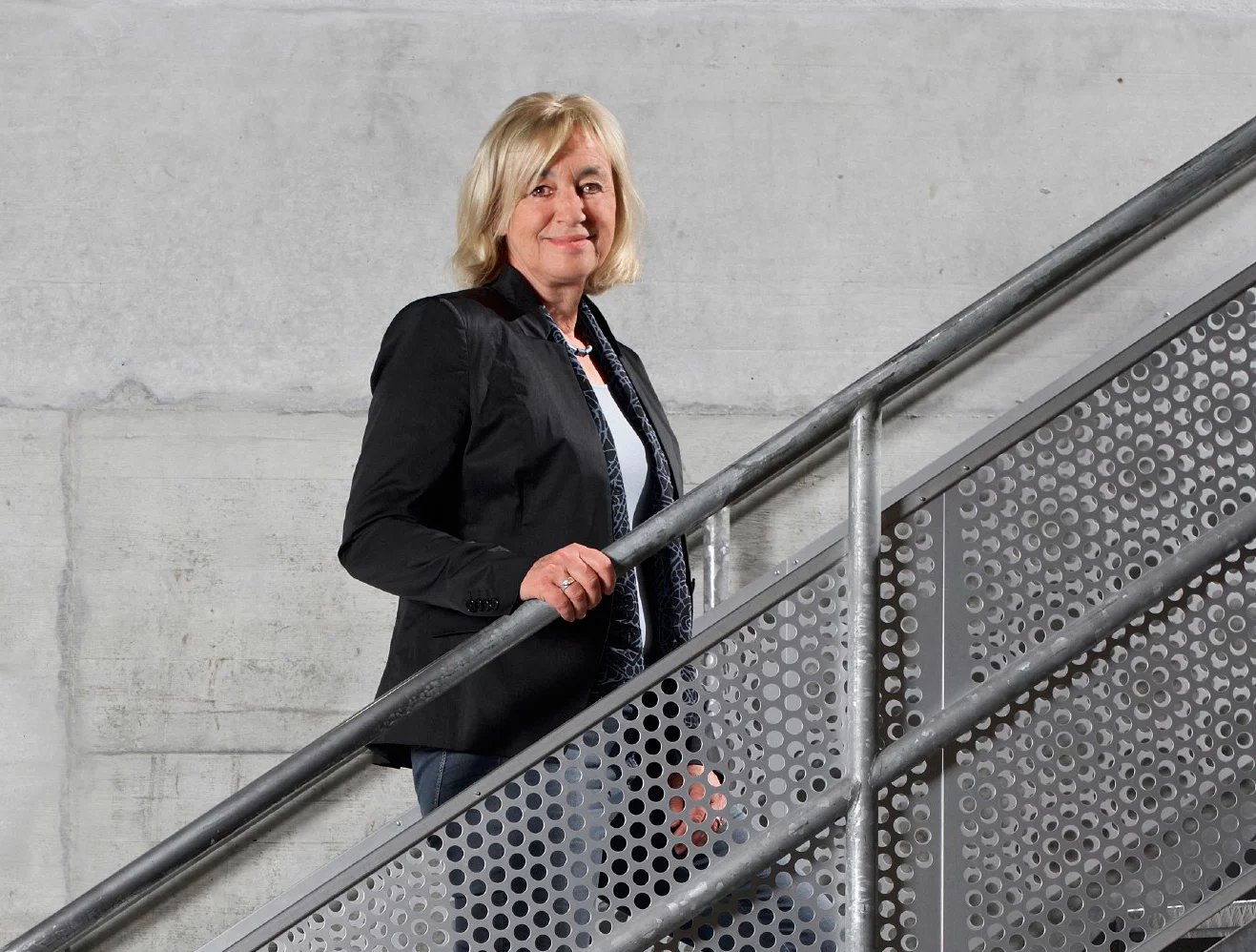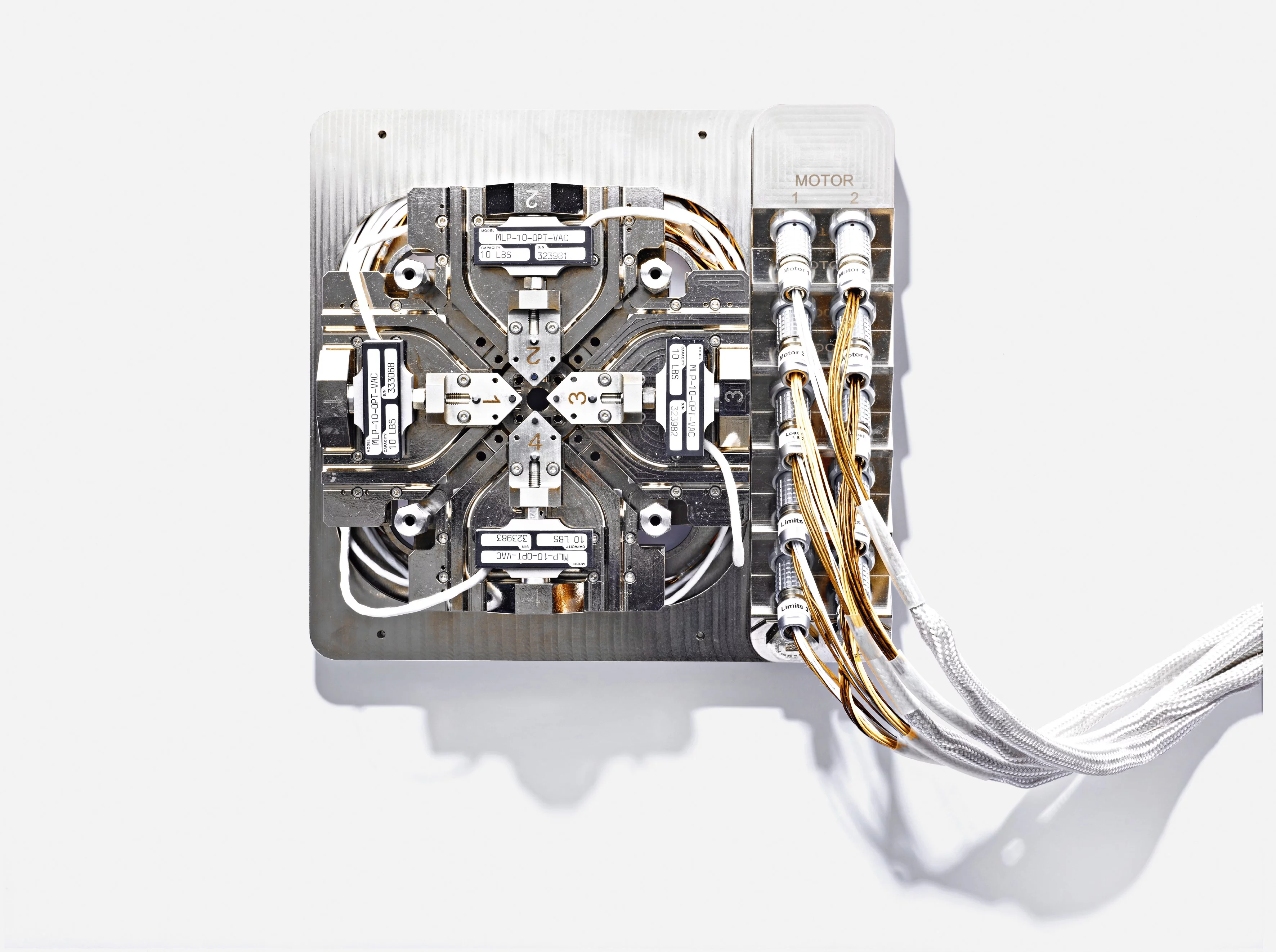An interview with Helena Van Swygenhoven-Moens
Using the large research facilities at PSI, Helena Van Swygenhoven-Moens examines the inner workings of metals. The watch industry needs small, robust springs and engineers are interested in turbine blades made of stress resistant materials.
The research results achieved by your working group at PSI directly benefit engineering sciences. In some cases, you cooperate directly with technology companies. Can you tell us about such a joint project?
One good example is our joint project with General Electric GmbH in Baden. Turbine blades produced for use in power stations retain residual stresses. These stresses lead to a change in the so-called metal microstructure, potentially weakening turbine blade performance. By combining the possibilities offered by neutron tomography and neutron diffraction, a doctoral candidate under my supervision developed a complex procedure for measuring residual tension in certain strategically essential areas in the interior of turbine blades: specifically, in the small crosspieces between the blade's inner air ducts. Using neutron measurements from PSI's Swiss Spallation Neutron Source SINQ, we were able to obtain research results that helped optimise the company's turbine production.
Does your research always target such large pieces of machinery?
Not at all. The large research facilities of the Paul Scherrer Institute are also suitable for detailed examinations of very small objects. In 2016, one of my doctoral candidates examined a specific metal used for small watch springs. Despite all its advantages, the material has one significant drawback: we scientists call this the tendency of the material to creep. This means that over time, a continued application of light pressure leads to a deformation of the material. The doctoral candidate examined this creep mechanism here at PSI's Swiss Light Source SLS and published her findings in a scientific journal. Se were subsequently contacted by a Swiss company, with whom we are now conducting an application-oriented research project supported by CTI (Swiss Commission for Technology and Innovation). To be precise, there are three companies involved in this project: the companies producing the material and the springs respectively, and a watch manufacturer. In this case, basic and applied research resulted in an improved product.
Humans have been working with metals for 10,000 years. Yet there's still potential for research and improvement?
Metal does not always equal metal: aluminium is very different from gold. And humans began developing different alloys early on. Today, we are in a position to make the microstructure of metals visible and this helps us to develop better metals. Simply put: a metal may be imagined as something resembling a sugar cube, made up of thousands of tiny sugar crystals. Metals also consist of many tiny granules. Previously, these granules were relatively large, measuring 50 thousandths of a millimetre. Today, new procedures allow us to produce nano-structured metals with granules measuring 50 millionths of a millimetre.
Realistic material deformations take place in several directions at once.
What are the consequences of these developments?
The deformability of a metal depends to a large degree on its microstructure. Today, the automobile and aerospace industries require light, stress-resistant materials. To satisfy these demands, new chemical compounds and approaches to structuring – including nano-structuring – are being examined. Researching and further improving such tailored materials is an important field in which material researchers and engineers cooperate.
At the end of 2013 you were awarded a 2.5 million euro grant in order to resolve a basic research issue. What exactly was that?
Our research often centres on the need to experimentally verify results achieved by computer simulation, or support such simulations with field data. But 90% of everything that we know about the deformability of metals stems from uniaxial deformation experiments based on observing a sample that undergoes strain in only one direction – by pulling from front and back. In reality though, deformations can be much more complicated and strain often takes place in several directions simultaneously, or strain paths change direction – as a sheet of metal does when it's being shaped to become an engine bonnet. The aim of my MULTIAX
project was the development of apparatuses in which metal samples are deformed in several directions, allowing us to observe changes in the microstructure during the deformation process. We carry out observations of larger pieces of metal at PSI's Neutron Source SINQ. We recently developed another, very small multi-axial deformation apparatus that allows us to examine a range of completely new materials of which only small amounts exist up to now. This machine can be used either at SLS or in a scanning electron microscope.
In light of current developments in Switzerland and Europe, might it become more difficult for scientists in Switzerland to access such EU funding?
Temporarily it looked as though the Swiss immigration referendum might lead to such difficulties. In the end, legal measures helped avoid negative consequences. Being denied access to EU funding would severely disadvantage Switzerland, which has generally been successful in securing European grants. However, we receive funding from the Swiss watch industry as well – also with respect to basic research. Two of my doctoral candidates are working on new gold alloys. Reddish gold is popular at the moment, as you'll see if you go into a watch shop. There's also demand for small components, directly manufactured by a 3D printer.
What makes metal research attractive for young people?
Metal research was indeed not particularly popular for a while and it was difficult to recruit motivated students. But challenges such as 3D printing or other new production methods have breathed new life into metallurgy. 3D printing is already being used in certain fields of medical engineering such as in the production of titanium prostheses. However, a lot of research remains to be done on more complex alloys.
At PSI you carry out experiments involving large and complex research facilities such as SLS and SINQ. Are these facilities really necessary?
It's true that such large equipment is not necessary for standard experiments. But in the kind of challenging work that we do, one single test enables us to gather the kind of information that used to require many detailed steps. Saving time means saving money.
Challenges such as 3D printing have breathed new life into metallurgy.
What wishes do you have for the future?
One particularly enjoyable aspect of my work is our frequent cooperation with engineers at technical companies. With our large research facilities and our methodological know-how we have something to offer to the Swiss industry. This is an aspect of our work that I would like to increase even further.
Interview: Judith Rauch



